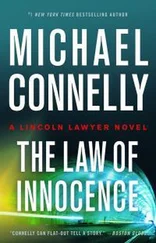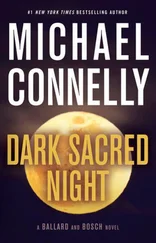“Jane Doe?” I asked.
“She was a student — a biology major — who took classes from Orton and claimed he had roofied her and then raped her after a chance encounter at a bar in Anaheim. She came to naked in a motel room and the last thing she remembered was the drink with him.”
“What a creep,” Myron said.
“You mean what a criminal,” Emily said.
“That too,” Myron said. “What happened? Jane Doe change her mind?”
“No, not at all,” Emily said. “She was solid. And smart. She called the police that night and they got a rape kit and took blood. Orton used a condom during the assault but they got saliva off her nipples. They were building a solid case against this guy. The tox on Jane came back with flunitrazepam, better known as Rohypnol, the date-rape drug. They had a solid witness in the victim and they were good to go with a case. They were just waiting on the DNA.”
“What happened?” I asked.
“The DNA typing was done by the Orange County Sheriff’s Lab,” Emily said. “The saliva came back as no match to Orton.”
“You’re kidding,” Myron said.
“I wish,” Emily said. “It killed the case. It cast doubt on her story because she had said under questioning that she had not been with another man for six days. An investigator with the District Attorney’s Office down there then dug up a number of prior sex partners Jane Doe had been involved with. It all added up to the DA passing. They wouldn’t touch it without the direct DNA link.”
I thought about what Jason Hwang had said about the DRD4 gene. The Orange County DA had dismissed Jane Doe as promiscuous and therefore not believable enough to support the case at trial.
“You said it was a chance encounter,” I said. “Was there any more on that? How did they know it was a chance encounter?”
“I didn’t ask that,” Emily said. “They just said it was random, you know. They ran into each other in a bar.”
“Did the saliva match anybody else?” I asked.
“Unknown donor,” Emily said. “There was a rumor going around at the time that Orton, being a DNA researcher, had somehow altered his own DNA to prevent the match.”
“Sounds like science fiction,” Myron said.
“It does,” said Emily. “According to my source, they ran the test at the sheriff’s lab a second time and it came back again as a negative match.”
“What about tampering?” Myron asked.
“It was suggested, but the Sheriff’s Department stood by the lab,” Emily said. “I think any indication that there was an evidence-integrity problem would endanger every conviction that relied on that lab for evidence analysis, and they weren’t going to go down that road.”
“And Orton walked away,” I said.
“To a degree,” Emily said. “There was no criminal case, but there was enough smoke because of Jane Doe’s unwavering story, even in the face of the DNA, for the school to go after Orton under the employee-conduct policies. Their mandate wasn’t criminal. They needed to protect other students at the school. So they quietly negotiated his exit. He kept his pension and a cloak of silence was dropped over the whole thing.”
“And what happened to Jane Doe?” I asked.
“That I don’t know,” Emily said. “I asked my source whom she dealt with at Anaheim PD and she could only remember that the detective who handled it had a perfect name for a detective: Dig. ”
“First or last?” I asked.
“She said first,” Emily said. “She described him as Latino so I am assuming the first name is Digoberto or a variation of that. It shouldn’t be too hard to figure out.”
I nodded.
“So,” Myron said. “Orton gets shown the door at UC–Irvine and just sets up shop in a private lab down the road. He got off easy.”
“He did,” Emily said. “But like my source told me, their big concern was getting him out of the school.”
“What about that rumor about changing his DNA?” I asked. “Is that even possible?”
“I did a little bit of research while waiting for you to show up,” Emily said. “Gene-editing technologies are advancing every day but they are not at the point — and certainly not four years ago when this happened — where you can change your entire code. What happened with the Jane Doe case is a mystery. According to my source, Jane Doe had a lawyer ready to sue Orton and the school. His office conducted its own testing on the sample and got the same result. No lawsuit was ever filed.”
All three of us were silent for a moment before Myron spoke.
“So what’s next?” he asked.
It was my story and I wanted to be protective of it, but I had to acknowledge that Emily Atwater had moved it along in a big way.
“Well, one thing we have to remember is that William Orton is a shady figure, but what Jack is pursuing does not touch him — yet,” Emily said. “It bears further reporting but let’s look at where we are. The four victims we know about were GT23 participants. It is possible but not yet proved that their DNA could have been sold to Orton’s lab for his research purposes. Now add in that Orton appears to be a sexual predator and it all gets more interesting. But we have nothing concrete that connects one with the other.”
“Exactly,” Myron said. “I’m wondering how far we go with this without a stronger connection.”
Myron looked at me, which I took as a good sign. It was still my story and he wanted to hear from me.
“I think it’s part of throwing out the net,” I said. “We have to see what comes up. I think the thing to do is try to get inside Orange Nano and talk to Orton. Maybe get a feel for him from a direct contact. I’m not sure how to do that, though. I don’t think we should call up and say we’re looking into the murders of four women. We need another way in.”
“I was thinking about that,” Emily said. “Again, waiting for Jack today I was looking around for anything I could find on Orton and I found one listing for him in an annual report for the Rexford Corporation. He’s a member of the board.”
“What’s Rexford do?” I asked.
“Primarily, it’s hair products for men,” Emily said. “With an emphasis on alopecia — hair loss. It is on the rise in both genders and within five years is expected to be a four-billion-dollar industry.”
“Orton’s trying to cure it,” I said.
“My guess, too,” Emily said. “If he can discover or create the genetic therapy that cures it or even slows it down, then just think what that would be worth. He’s on the Rexford board because the company is funding his research and that could be our way in.”
“We say we’re looking into hair loss?” I asked.
“We follow the money,” Emily said. “Billions are being spent each year but there is no cure — not now. We go in with the consumer angle: How many of these treatments are worthless and where are we on the genetic cure? We play to Orton’s ego, say we heard that if anybody is going to make the breakthrough, it’s you.”
It was a good plan, only marred by my wish that I had thought of it first. I said nothing and Myron looked at me.
“What do you think, Jack?” he asked.
“Well, this alopecia research is new to me,” I said. “Jason Hwang told me that Orton was studying addiction and risky behaviors. Going bald is not connected with either — as far as I know.”
“That’s how these researchers work,” Emily said. “They get a ride on a Big Pharma ticket to do research in one arena and it funds their other research, the stuff that really holds their interest. Rexford is paying for the research they want but funding the research Orton wants.”
I nodded.
“Then I think it’s a good idea,” I said. “That’s our way in. Maybe we go through Rexford first. Get their corporate PR people to set it up, make it harder for Orton to say no — especially if he’s got something hinky going on down there.”
Читать дальше





![Майкл Коннелли - Christmas Even [Short story]](/books/390532/majkl-konnelli-christmas-even-short-story-thumb.webp)
![Майкл Коннелли - The Night Fire [Harry Bosch - 22]](/books/405630/majkl-konnelli-the-night-fire-harry-bosch-22-thumb.webp)



